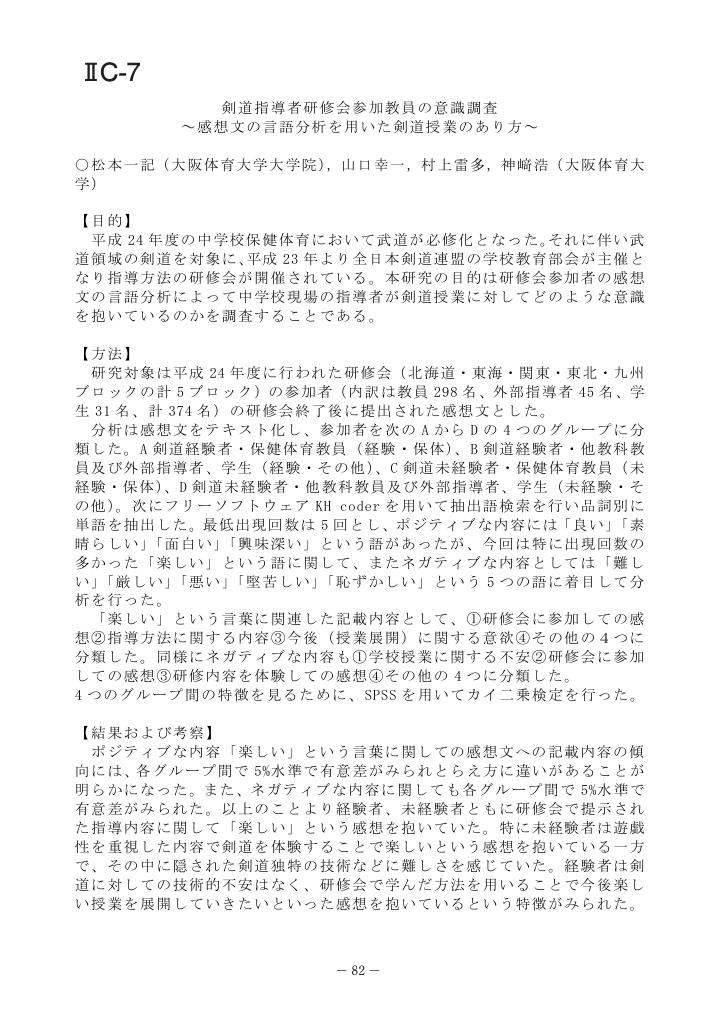1 0 0 0 OA 剣道経験年数の違いによる左右脚のアキレス腱の形態と力学的特性について
- 著者
- 牧野 晃宗 岩崎 正徳 国正 陽子 久野 峻幸 佐野 加奈絵 村元 辰寛 村上 雷多 神﨑 浩 小田 俊明 石川 昌紀
- 出版者
- 一般社団法人 日本体育・スポーツ・健康学会
- 雑誌
- 体育学研究 (ISSN:04846710)
- 巻号頁・発行日
- vol.61, no.2, pp.639-649, 2016 (Released:2016-12-14)
- 参考文献数
- 18
One of the most frequent injuries in Kendo athletes is Achilles tendinopathy in the left leg, for example Achilles tendon rupture. However, preventive approaches for Achilles tendinopathy in Kendo athletes have not been well considered. Therefore, the purpose of the present study was to examine differences in the architectures of the gastrocnemius muscle and Achilles tendon in relation to kendo training experience, and to examine the mechanical properties of the Achilles tendinous tissues (AT) in Kendo athletes in order to clarify why Achilles tendinopathy occurs in the left leg. Sixty-five Kendo male athletes with different periods of kendo training experience and 20 healthy male control subjects participated in this study. The architectural properties of the medial gastrocnemius muscle (MG) and Achilles tendon in both legs were measured using ultrasonography. In addition, 20 expert Kendo male athletes and healthy male controls pair-matched with the kendo athletes for body height and body mass were examined for their AT mechanical properties during passive dorsiflexion of both legs. The differences in the cross–sectional areas of the Achilles tendon and MG muscle between the left and right legs were greater in Kendo athletes with longer experience. Especially, the expert kendo athletes had lower AT stiffness and Young's modulus in the left leg than did the control subjects. These results suggest that kendo leads to specific Achilles tendon and muscle adaptation. These specific adaptations of the MG fascicles and AT may be one of the risk factors for Achilles tendon rupture in Kendo athletes.
